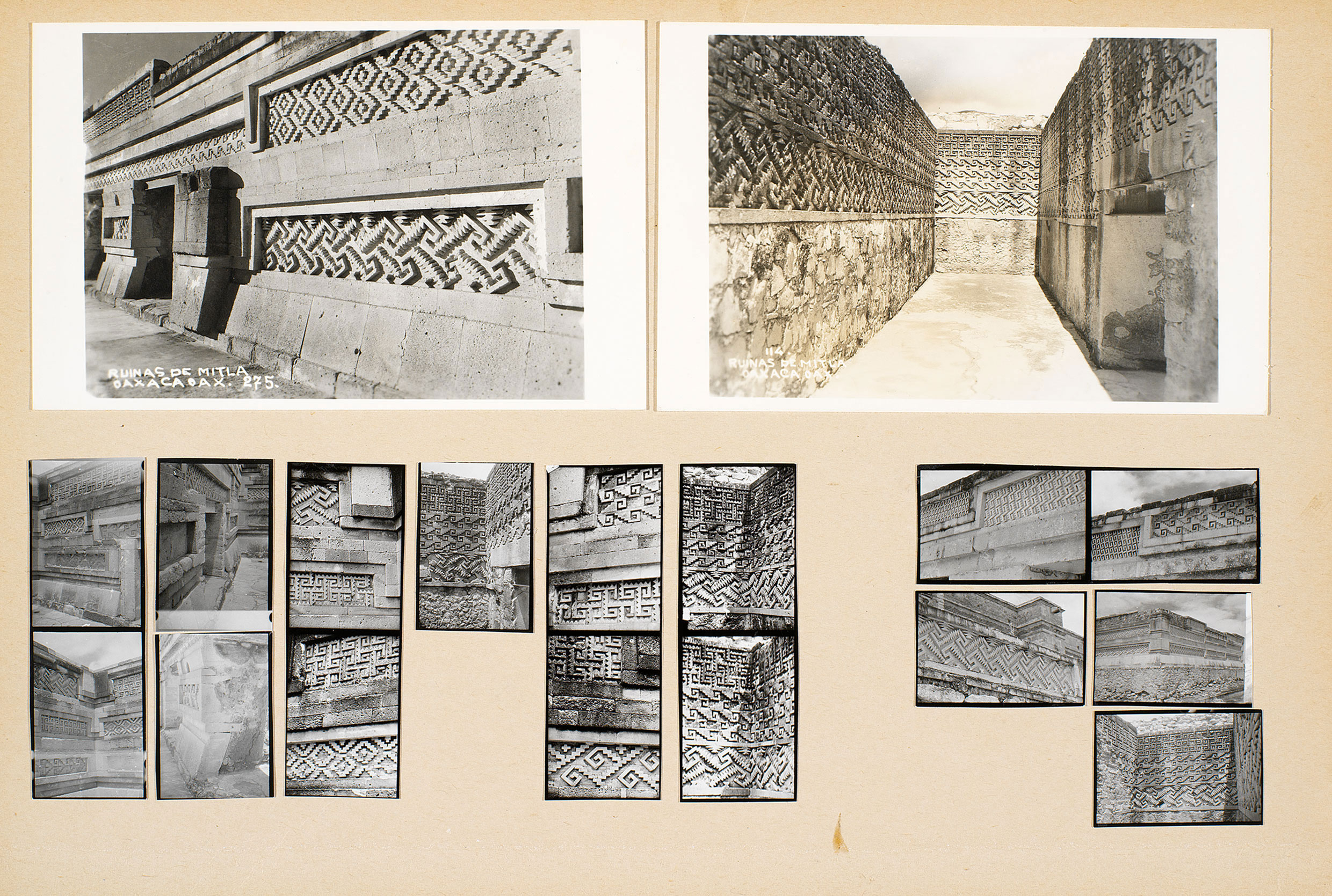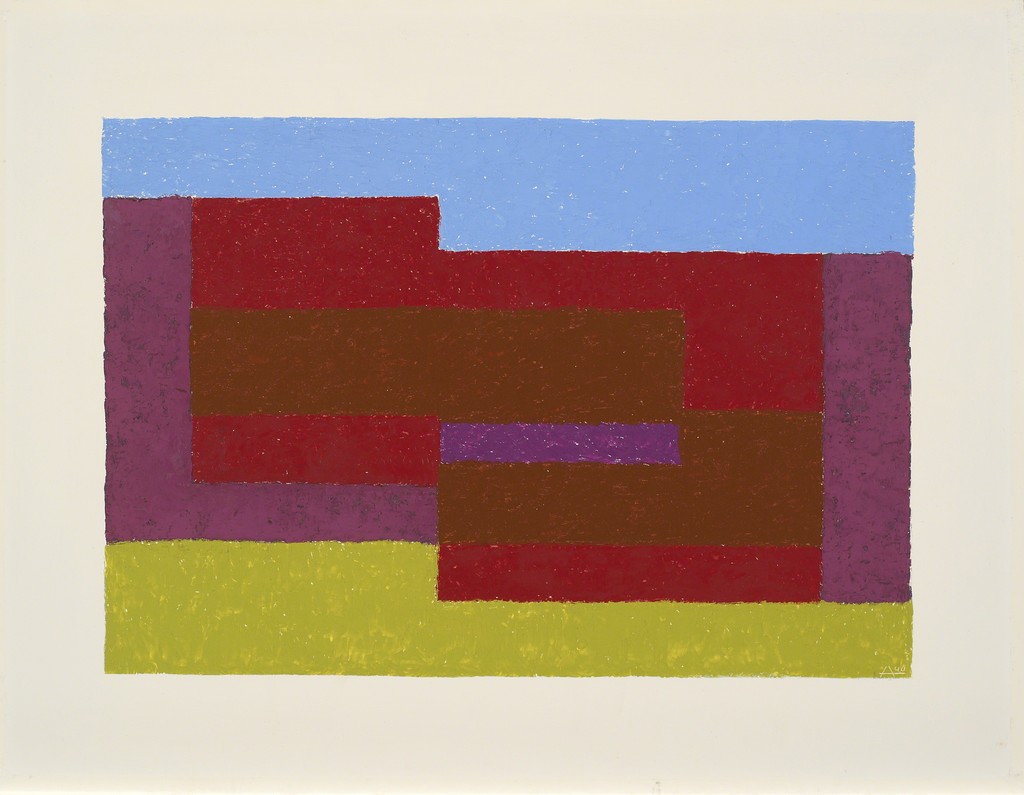Until 3 SEPTEMBER 2018
Peggy Guggenheim Collection | Venice, Italy
From November 3, 2017, through March 28, 2018, the Guggenheim Museum will present Josef Albers in Mexico, an exhibition illuminating the relationship between the forms and design of pre-Columbian monuments and the art of Josef Albers (b. 1888, Bottrop, Germany; d. 1976, New Haven). The presentation will feature a selection of rarely shown early paintings, iconic canvases from Albers’s Homage to the Square and Variant/Adobe series, and works on paper.
The exhibition also includes a rich selection of photographs and photocollages, many of which have never before been on view and were created by Albers in response to frequent visits to Mexican archaeological sites beginning in the 1930s. With letters, studies, and unseen personal photographs alongside works drawn from the collections of the Guggenheim Museum and the Josef and Anni Albers Foundation, Josef Albers in Mexico presents an opportunity to learn about the least known aspect of his practice, photography, offering a new perspective on his most celebrated abstract works.
Josef Albers in Mexico is organized by Lauren Hinkson, Associate Curator, Collections, Solomon R. Guggenheim Museum.
An artist, poet, theoretician, and professor of arts and design at the Bauhaus, Dessau and Berlin; Black Mountain College, Asheville, North Carolina; and Yale University, New Haven, Albers worked across the mediums of painting, printmaking, murals, and architecture. With his wife, the artist Anni Albers, he traveled to Mexico and other Latin American countries more than a dozen times from 1935 to 1967 to visit monuments of ancient Mesoamerica, which archaeologists were then excavating amid a resurgence of interest in pre-Columbian art and culture. On each visit, Albers took hundreds of black-and-white photographs of the pyramids, shrines, and sanctuaries at these sites, often grouping multiple images printed at various sizes onto paperboard sheets. The resulting photographs and photocollages reveal Albers’s innovative, if understudied, approach to photography and also underscore the importance of seriality within his overall body of work.
Albers’s collaged images also suggest a nuanced relationship between the geometry and design elements of pre-Columbian monuments and the artist’s iconic abstract canvases and works on paper. Several of the latter are titled after key sites in Mexico, and formal resonances between the two bodies of work become apparent, especially when viewed together as in the Guggenheim presentation. Albers’s embrace of pre-Columbian imagery may be considered within the complex and often-fraught history of modernist artists looking toward non-Western cultures for source material.
His work contrasts with that of the revolutionary Mexican artists with whom he met on his trips, including Diego Rivera. At the same time, Albers’s long-term commitment to studying Mexican art and architecture also positions him as a prescient figure in the history of post–World War II American art, when artists such as Donald Judd, Ad Reinhardt, and Robert Smithson looked toward ancient traditions with a new sensitivity and self-awareness.
A fully illustrated catalogue, with scholarly essays by Hinkson and Joaquin Barríendos, accompanies Josef Albers in Mexico. The volume also includes writing by Josef Albers and an illustrated map documenting the Alberses’ journeys. The legacy of education is a strong element of his practice and will be reflected in public programs, such as a November 18 workshop for educators on the color theory he developed within his seminal pedagogical project Interactions of Color (1964).
Josef Albers
Governor’s Palace, Uxmal, 1952
Gelatin silver print, image: 11.6 x 17 cm; sheet: 12.7 x 18.1 cm
Solomon R. Guggenheim Museum, New York, Gift, The Josef and Anni Albers Foundation, 1996
© 2017 The Josef and Anni Albers Foundation/Artists Rights Society (ARS), New York
Josef Albers
Grand Pyramid, Tenayuca, 1937
Untitled (Great Pyramid, Tenayuca, Mexico)
Ohne Titel (Grosse Pyramide, Tenayuca, Mexiko)
Gelatin silver print, image: 7.8 x 11 cm; sheet: 8.4 x 11.6 cm
Solomon R. Guggenheim Museum, New York, Gift, The Josef and Anni Albers Foundation, 1996
© 2017 The Josef and Anni Albers Foundation/Artists Rights Society (ARS), New York

Josef Albers
Mitla, 1956
Gelatin silver prints and postcards, mounted on paperboard, 20.3 × 30.5 cm
The Josef and Anni Albers Foundation
© 2017 The Josef and Anni Albers Foundation/Artists Rights Society (ARS), New York

Josef Albers
To Mitla, ca. 1940
Oil on Masonite, 53.3 × 71.1 cm
The Josef and Anni Albers Foundation
© 2017 The Josef and Anni Albers Foundation/Artists Rights Society (ARS), New York
Study for Homage to the Square: Consent, 1947
Oil on Masonite, 40.3 × 40.2 cm
Solomon R. Guggenheim Museum, New York, Gift, The Josef
Albers Foundation, Inc., 1991
© 2017 The Josef and Anni Albers Foundation/Artists Rights Society (ARS), New York
Josef Albers
Variant/Adobe, Orange Front, 1948-1958
Oil on Masonite, 59.6 × 68.5 cm
The Solomon R. Guggenheim Foundation, Gift, The Josef and Anni Albers Foundation in honor of Philip Rylands for his continued commitment to the Peggy Guggenheim Collection, 1997
© 2017 The Josef and Anni Albers Foundation/Artists Rights Society (ARS), New York

Josef Albers
Prismatic II, 1936
Oil on wood composition panel, 45.7 × 48.3 cm
The Josef and Anni Albers Foundation
© 2017 The Josef and Anni Albers Foundation/Artists Rights Society (ARS), New York
Josef Albers
Study for Sanctuary, ca. 1941-42
Ink on paper, 43.2 × 55.9 cm
The Josef and Anni Albers Foundation
© 2017 The Josef and Anni Albers Foundation/Artists Rights Society (ARS), New York

Josef Albers
Detail of stonework, Mitla, ca. 1957
Gelatin silver print, 24.7 × 17.7 cm
The Josef and Anni Albers Foundation
© 2017 The Josef and Anni Albers Foundation/Artists Rights Society (ARS), New York




Comments
Post a Comment